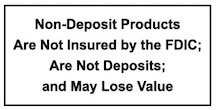12/03/2022: How Does Identity Theft Happen?
Identity theft can happen in a variety of ways, including using stolen credit cards and social security numbers. But how does it happen? In this article, we’ll take a look at the most common types of identity theft and how they happen.
What Is Identity Theft?
Identity theft occurs when someone obtains one or more of your personal identifiers, such as a name, Social Security number, birth date, or credit card number. Identity thieves use this information to commit fraud by pretending to be you and opening new accounts in your name.
The most common types of identity theft are:
- Financial Identity Theft: Using your credit card information to make purchases, stealing from your bank account, or opening new accounts using your Social Security number along with other data.
- Medical Identity Theft: Getting drug prescriptions and medical services—which can range from checkups to costly surgeries—and buying medical devices like wheelchairs or hearing aids.
- Criminal Identity Theft: As the name suggests, criminal identity theft occurs when someone arrested by law enforcement uses your identity instead of theirs. This can result in you receiving court summons, bench warrants, and more.
- Synthetic Identity Theft: One of the lesser known but quickly growing forms of identity theft in the U.S, synthetic identity theft involves using real people’s details to forge fake identities, which can then be used to commit financial crimes and more.
- Child Identity Theft: Child identity theft involves using the identity of a minor. This is typically easier than stealing the information of an adult since most minors likely don’t have credit reports and other finance tracking information.
Common Ways People Commit Identity Theft
Even if you are careful with your personal information, a person who commits identity theft may obtain your personal information in a variety of ways.
Phishing/Smishing/Vishing
The names may sound strange but phishing, smishing, and vishing are essentially scam emails, messages, and phone calls to target victims. In the case of emails and messages, the scammer’s end goal would be to get the victim to open any links or attachments, or otherwise give out information. Vishing, or voice phishing, in particular, is used to get people to divulge their personal information over the phone.
Data Breaches
Hackers can use malware to access the personal or confidential data stored on a computer without permission. Even if you believe the computer has been erased of all its contents, an infected hard drive may still contain sensitive information that can be accessed by an intruder via hacking software.
Fake Websites
Much like other scam methods, fake websites can look incredibly real. They can mimic legitimate websites in order to get the user to give them their personal information. Fake mobile apps can also be used in the same way.
Public WiFi
Public networks are usually encryption-free, meaning that a hacker can get in between you and the connection point without you even realizing it. They can then track your usage and even inject malicious programs into your device.
Identity theft can be scary, but with the proper steps, you can reduce the risk of it and minimize the damage if it happens. To learn more, reach out to Security State Bank today. You can also take a look at our Education Center for more financial resources or directly contact us online.





